A Salvaged Banksy Mural is Now on View in NYC
This unique Banksy mural goes up for auction on May 21st in NYC!


As the age of jet travel was ramping up in 1960, a deadly mid-flight plane crash over New York would temporarily dampen the fervor and foment public clamor for better air traffic safety control. It was December 16, 1960, one day before the 57th anniversary of the Wright Brothers’ first flight. Eyewitness and radar reports suggest that the planes, a United Airlines DC-8 and a TWA Super Constellation, likely collided over Staten Island. The DC-8 was coming from Chicago O’Hare bound for Idlewild Airport, now JFK Airport carrying 84 passengers. The Super Constellation was going from Dayton and Columbus, Ohio to LaGuardia Airport. The Park Slope plane crash left devastation, the signs of which can still be seen today.
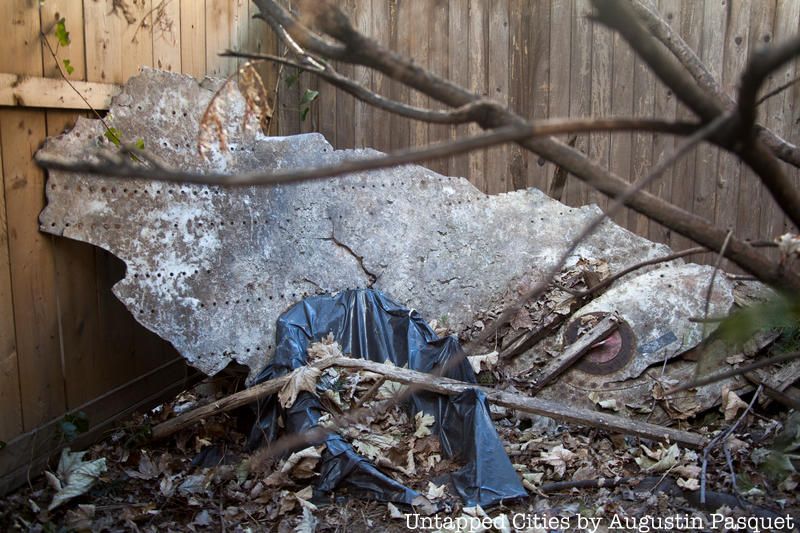
The TWA plane crashed at Miller Field on the southeastern coast of Staten Island, where New Dorp High School now stands. There were no survivors, and the 44 bodies were brought to Seaview Hospital. The DC-8 made it all the way to Park Slope, Brooklyn, where it came down on Sterling Place near the intersection of 7th Avenue. The devastation to this dense residential area was significant. 10 brownstones went aflame, along with a funeral home at the intersection, a deli, and a laundromat. The prophetically-named Pillar of Fire Church located mid-block was completely destroyed. A 90-year-old caretaker of the church was killed, one of six casualties on the ground.
There was one initial survivor from the crash in Brooklyn, Stephen Lambert Baltz, an 11-year-old boy from Illinois, who was thrown out of the plane onto a snowbank. He recounted his view of New York City just before the crash to a doctor at Brooklyn’s Methodist Hospital, where he was taken. “It looked like a picture out of a fairy book. It was a beautiful sight,” he said, according to The New York Times. He succumbed to pneumonia the next day.
It would become the deadliest air accident to date at the time with a total death toll of 134 people. It would also be the first accident to be investigated using the infamous “black box.” It is known that the DC-8 had been requested to fly into a holding pattern and appeared to have missed the mark, possibly due to equipment failure either on the plane or on the ground.
Today, the scars of the 1960 plane crash have been mostly repaired, erased or built over, but there are some remnants you can still find today.
The brickwork atop 126 Sterling Place is of a different color and material from its twin buildings next door, and the black cornice is completely missing atop the building. The New York Times writes that a “25-foot section of the plane’s right wing knifed through” the complex.

Brick columns at 123 Sterling Place, a building built in 1920, show evidence of patching up, but the most unique remnants are in the backyard of sculptor Steve Keltner. On our serendipitous visit to the crash site, Steve passed by showing us the above remnants. He paused to ask his companion, “Should I show them the pièce de résistance?” He brought us into his apartment on Sterling Place, where inside and in the backyard he holds remnants he discovered while the church site was still vacant.
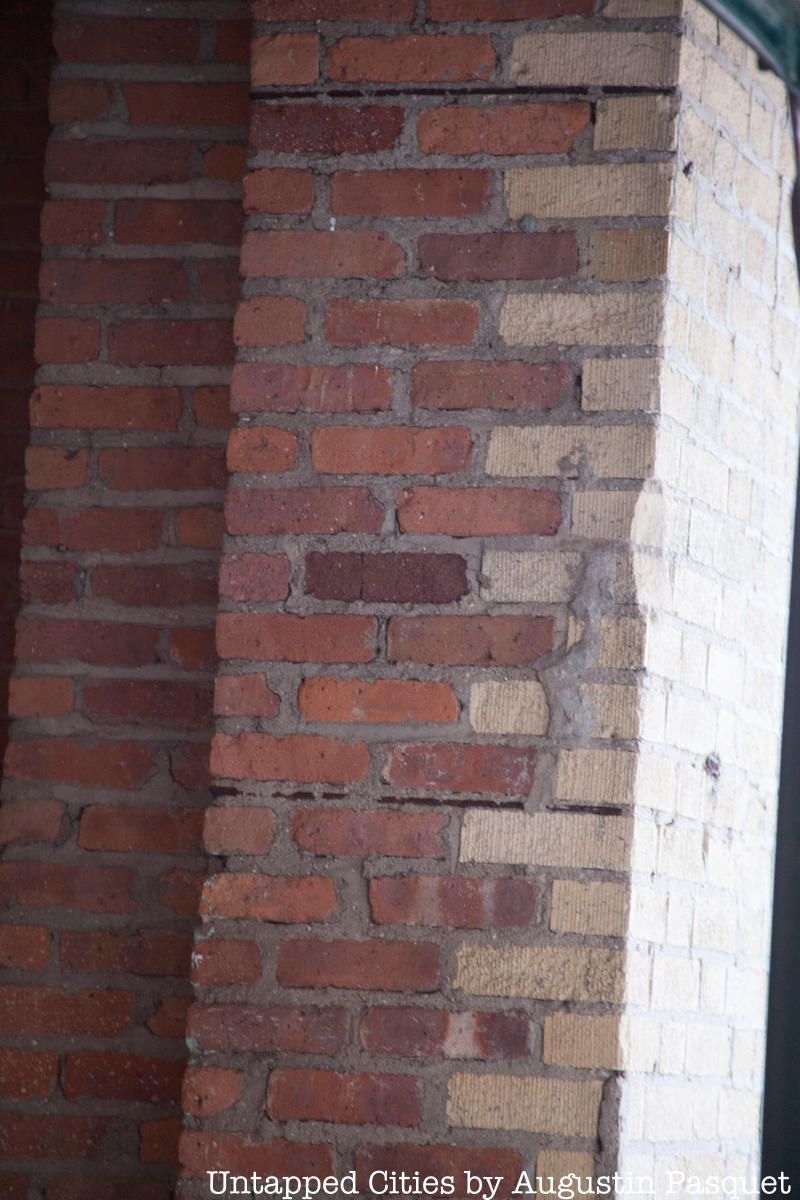
One metal piece, Steve believes, is part of a chair from the plane. There are two larger pieces in the backyard, one currently frozen into the ground. Looking closer, you’ll see the gasket from the right wing of the airplane. A label reads “No. 5 main tank Auxiliary Fuel. Structural limit 17,605 lbs.”
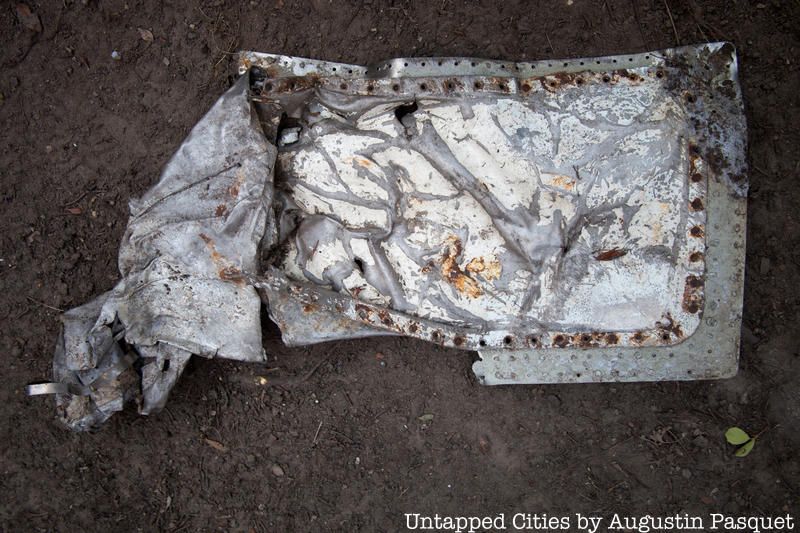
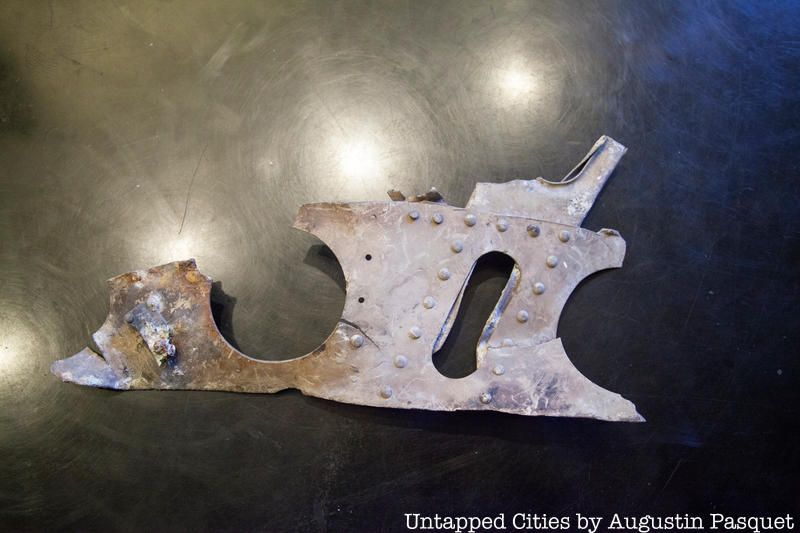
The grates on the front window of Steve’s apartment are also notable: they come from the original wrought-iron gate of the Pillar of Fire Church, which Steve removed and installed at his place, making the circular modifications.
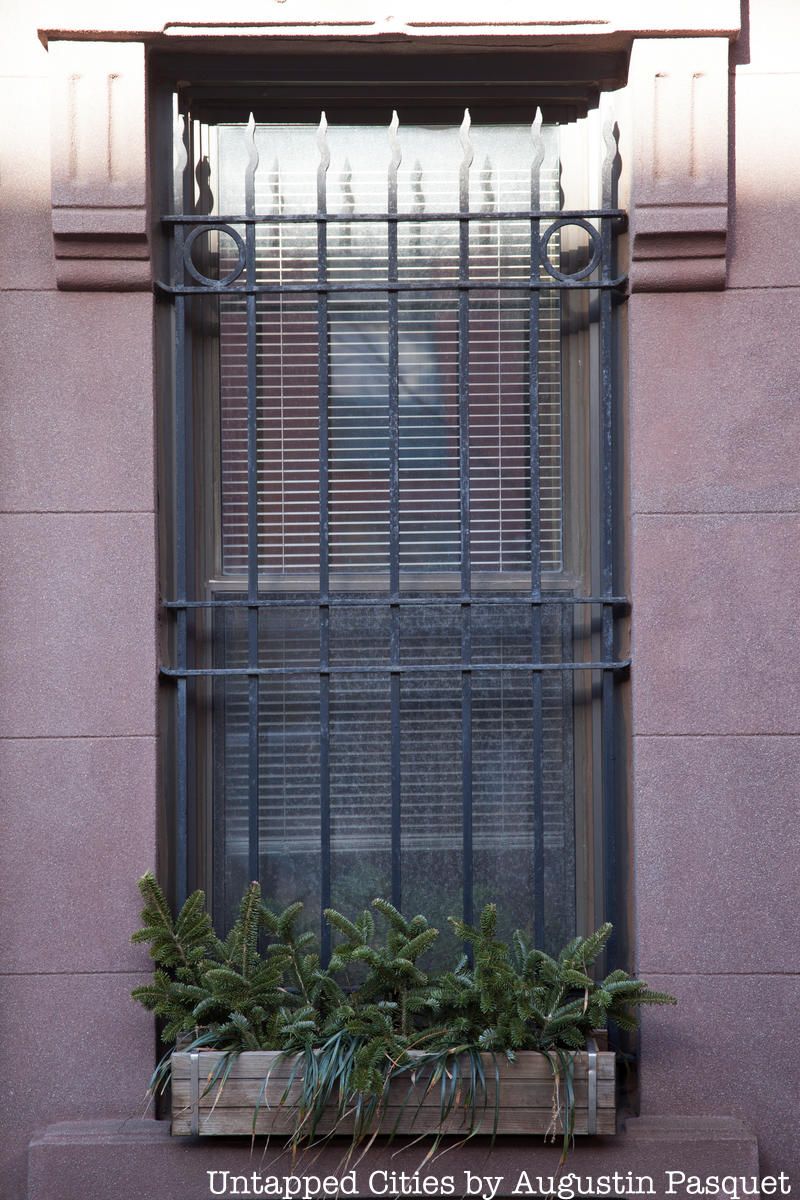
Although no plaque exists on Sterling Place, commemorative markers have been placed elsewhere in Brooklyn. United Airlines purchased a lot in Green-Wood Cemetery to bury unidentified remains. In 2010, the cemetery erected a memorial to the victims of the plane crash.
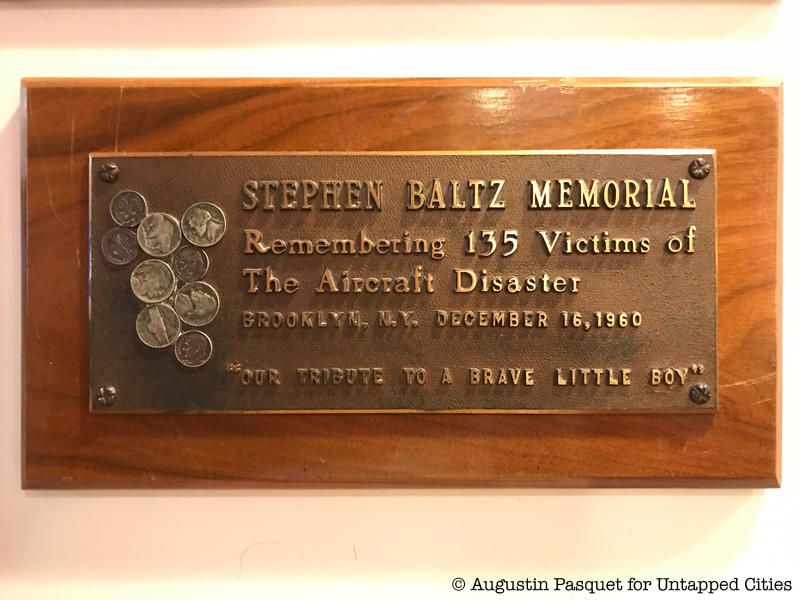
And in the chapel of Memorial Hospital, where Stephen Baltz died, there is a plaque that reads:
“Stephen Baltz Memorial / Remembering 135 Victims of The Aircraft Disaster / Brooklyn, NY December 16, 1960 / “Our Tribute to a Brave Little Boy”
Embedded into this plaque are 4 dimes and 5 nickels which Baltz had in his pocket when the plane crashed, which were donated by his father to the poor box.
It is also important to remember that Park Slope in the early 1960s was not the Park Slope you see today. In fact, it was a neighborhood described then as “in transition.” Today, people would comment that it was “gentrifying.” A book about Sportsmen Row in Brooklyn states that after the crash, in the mid-1960s, Park Slope was “rediscovered” by young professionals who moved in for the affordable rents and convenient location. Residents renovated abandoned and neglected brownstones and established a community – so much so that by 1973, the neighborhood was landmarked.
The two buildings at the corner of Sterling Place and 7th Avenue have since been replaced, but if you look closely along the street, the above remnants of the Park slope plane crash will appear before you.
Next, see JFK Airport’s Demolished Jet Age Terminals and discover the secrets of JFK Airport.
Subscribe to our newsletter